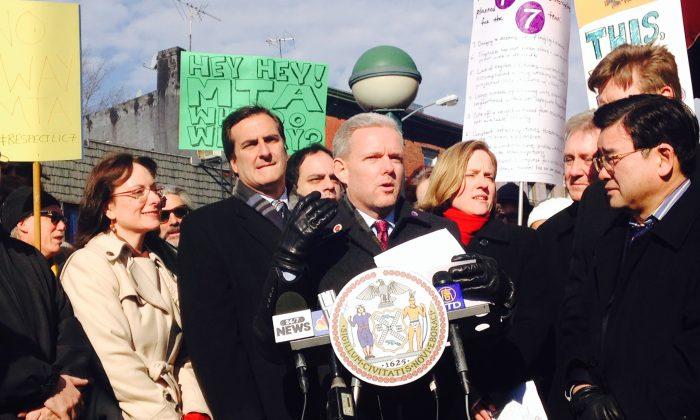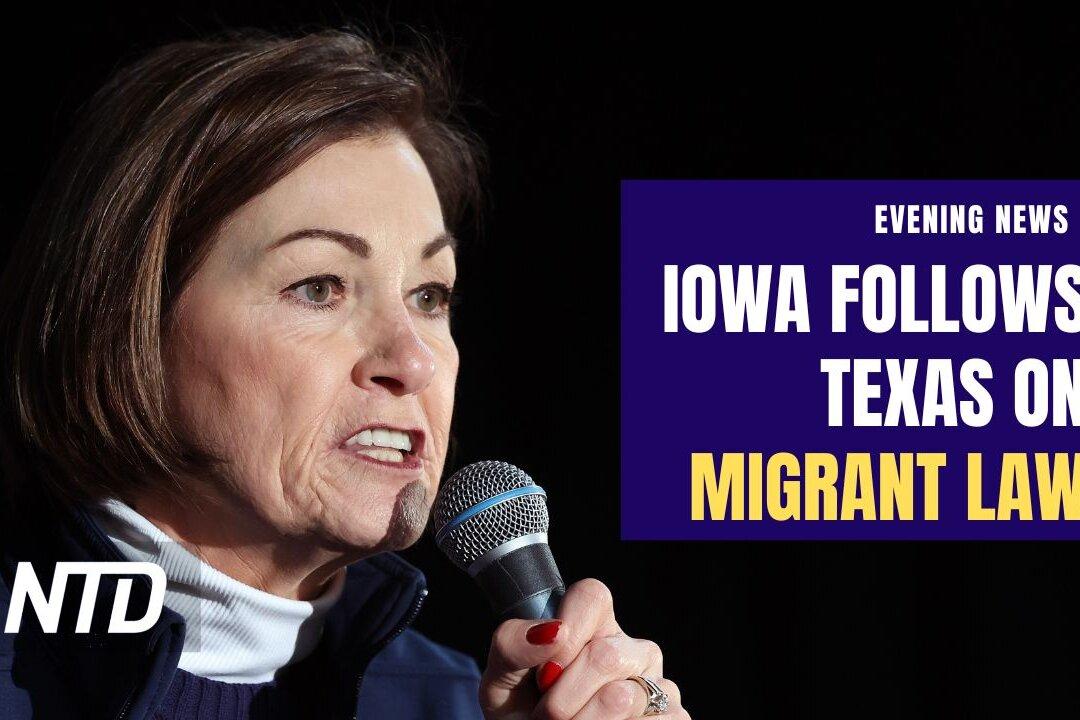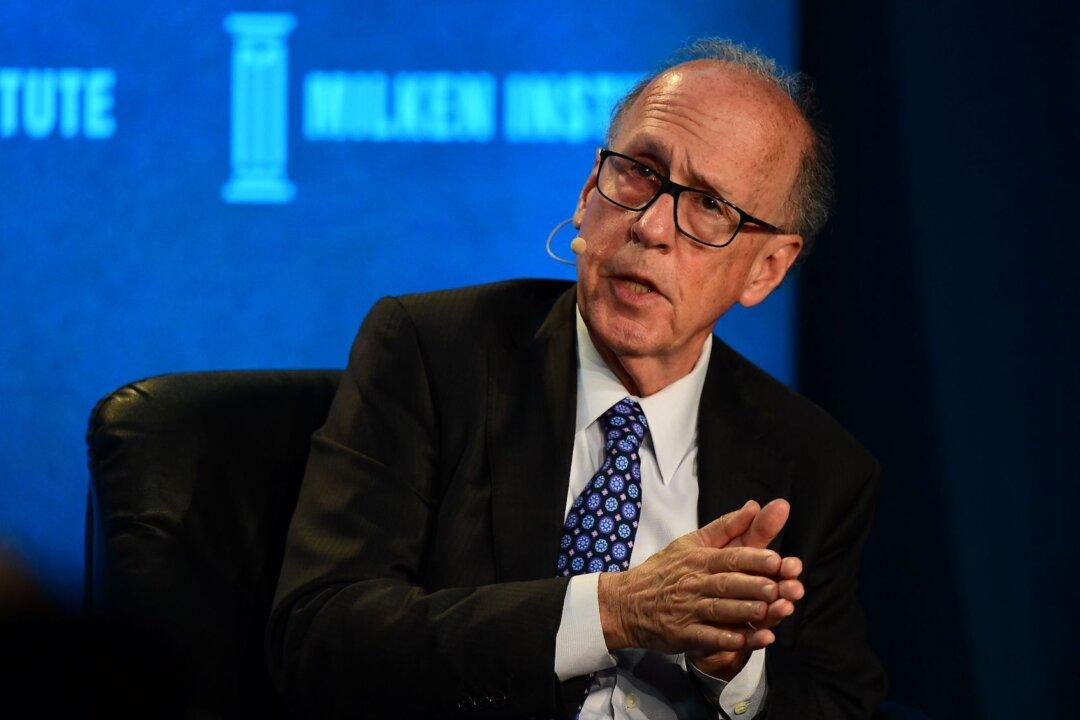NEW YORK—Riders on the No. 7 train are looking at a longer weekend commute for five months in 2014 starting at the end of February. The MTA released a notice Jan. 16 saying that service will be suspended between Queensboro Plaza and Times Square 42nd Street for 22 weekends for improvement work on the No. 7 line.
“That is almost half of the weekends in the entire calendar year,” said Council member Jimmy Van Bramer at a press conference protesting the service suspension. “Stuck at the end of that notice was: this is not going to end until 2017.”
On Friday, Van Bramer was joined by other elected officials from Queens, small-business owners, and community members calling for the MTA to provide better transportation alternatives while the work is being done.
The officials pointed out four major problems with the No. 7 line closures. One is that there was no communication between the MTA and the affected communities to figure the best transportation alternatives.
Second, the MTA refused the alternatives proposed by Queens officials and residents. The alternatives included a shuttle from Queens that goes through the Midtown Tunnel and stops at Grand Central Station and discounts on the Long Island Rail Road or the East River Ferry.
Third, the work is done during the day on the weekend, when small businesses count on getting the most customers.
Finally, the process is taking too long, with service stopped intermittently for years.
“If this is a benefit for the city and for the borough, there should be no harm in communication to figure out how to make it easier for the communities that it will affect,” said Queens Borough President Melinda Katz.
Without a proper alternative, small-business owners said they will suffer from the service changes as fewer people will be inclined to come into neighborhoods directly served by the No. 7 line once it is stopped.
“I cannot run a consistently successful restaurant without consistent train service,” said Rebecca Trent, Long Island City resident and business owner. “I haven’t paid myself since the holidays and I don’t know how I’m going to survive this.”
While the service suspension from Queensboro Plaza to Times Square mostly affects Long Island City, it also has a rippling effect on the commute to and from Flushing, where residents depend solely on the No. 7 train.
“A lot of senior citizens, they don’t know how to get off one train and change to another train,” said Council member Peter Koo. “It’s hard for them, they are recent immigrants.”
Necessary Repairs
According to the MTA, the improvement work to the No. 7 line is necessary for several reasons. First, it is needed to repair damage caused by Hurricane Sandy, especially to the Steinway Tube that carries the No. 7 trains under the East River. Second, old track panels need to be replaced. If they are not, then they become subject to mandatory speed reduction to prevent derailments, which results in fewer trains operating per hour. Third, the MTA is working on replacing the decades old signaling system on the No. 7 line with the Communications Based Train Control, which will bring countdown clocks and allow for more trains to run per hour.
The workload is extensive and cannot be completed overnight as it requires 48 hours of continuous access to the tracks. Because the No. 7 line is very busy throughout weekdays and cannot be shut down for long periods of time, repairs can only be done on the weekends, which results in a longer, more drawn out process.
MTA spokesman Kevin Ortiz also said that reaching out to community board members and elected officials has always been part of the process when work is done. A special free shuttle bus will run along all closed No. 7 line stations and there will be increased N and Q service.
The MTA had not previously heard about the proposal to give a discount on the LIRR and does not have jurisdiction over the East River Ferry.
Ortiz believes the alternatives the MTA has currently provided are much quicker than a Midtown Tunnel shuttle to Grand Central.
“The vast majority of customers’ destination is not Grand Central. Most of the customers riding the 7 are heading to other parts of Manhattan: West Side, downtown. It is much quicker for someone to take the shuttle bus in Long Island City and connect to one of the other trains to get to Manhattan,” he said.
“The important thing here to remember is,” Ortiz said, “this is work that needs to be done.”
Yi Yang is a special correspondent in New York.





Friends Read Free